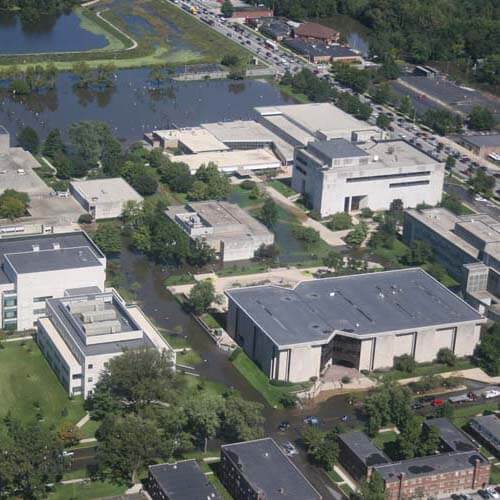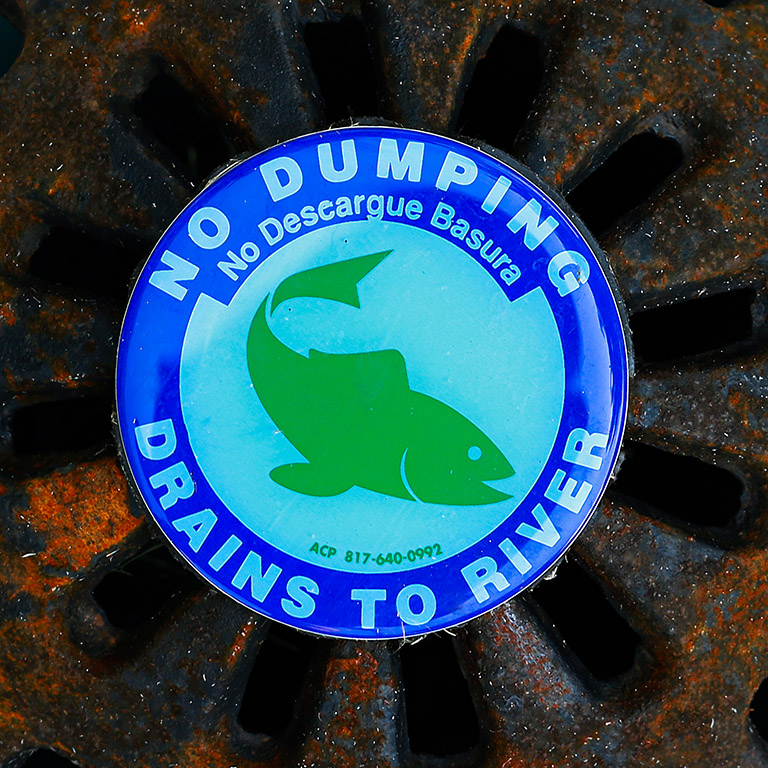Water Resources
Water is an essential natural resource for supporting life, maintaining healthy ecosystems and regulating climate. It is also a critical part of IU’s infrastructure.
Sustainability efforts focus on controlling both the quantity of water we consume as a campus and the quality of stormwater that is discharged back to the local environment.
The IU Northwest campus lies along the West Branch of the Little Calumet River and limiting stormwater runoff to control flooding and maintain water quality is fundamental to operating a more sustainable campus and mitigating the impacts of climate change.





